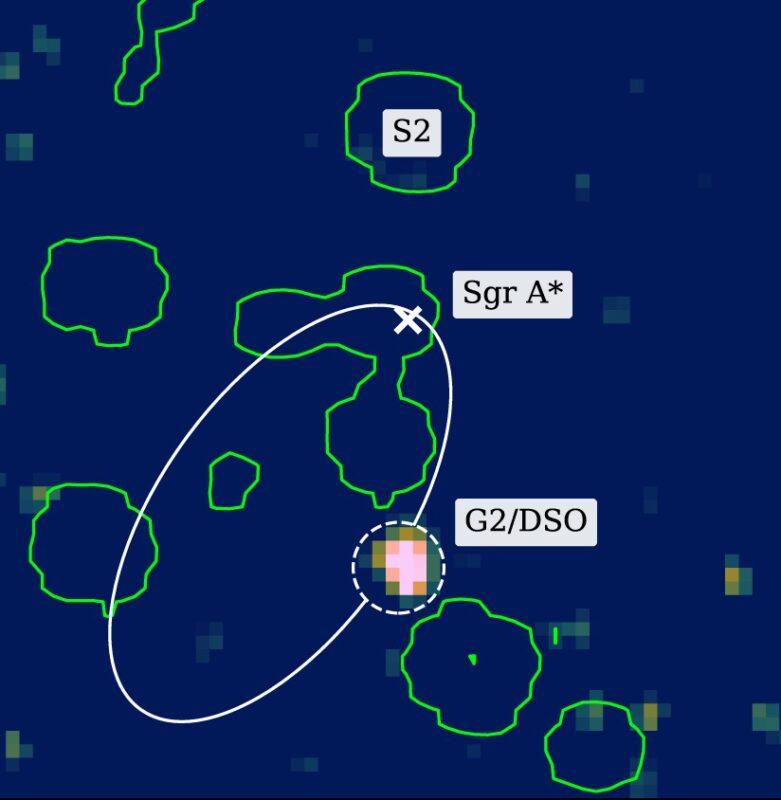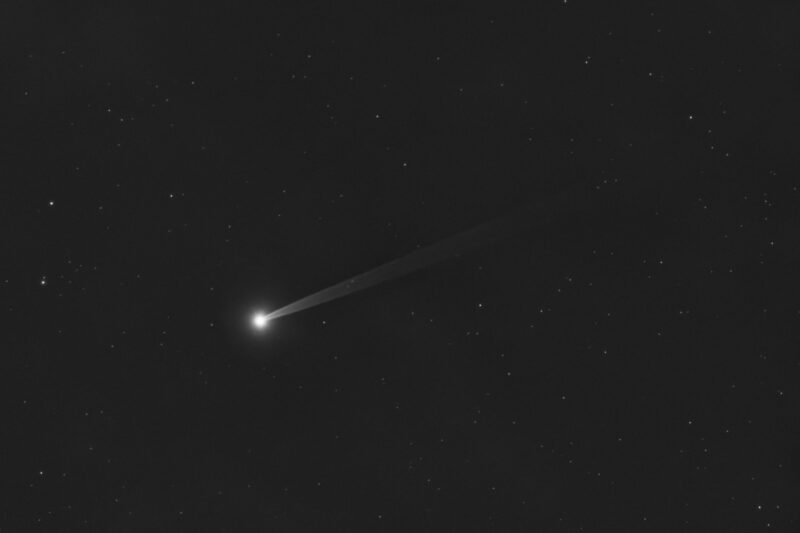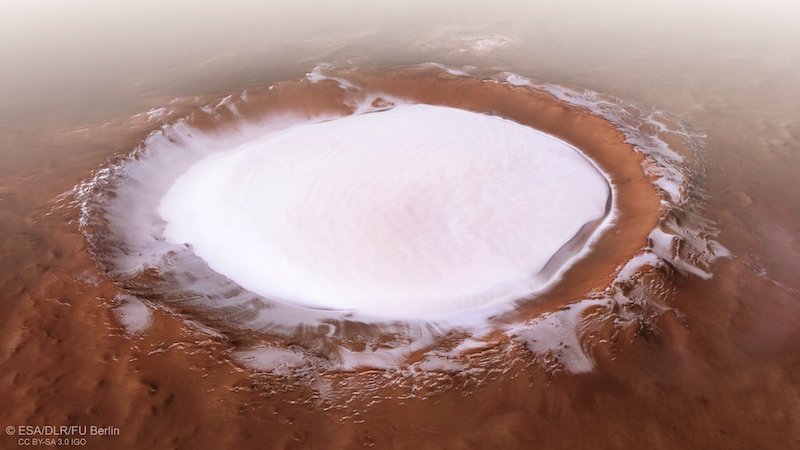Now Reading: What etched these strange gullies on Mars into the sand?
-
01
What etched these strange gullies on Mars into the sand?
What etched these strange gullies on Mars into the sand?
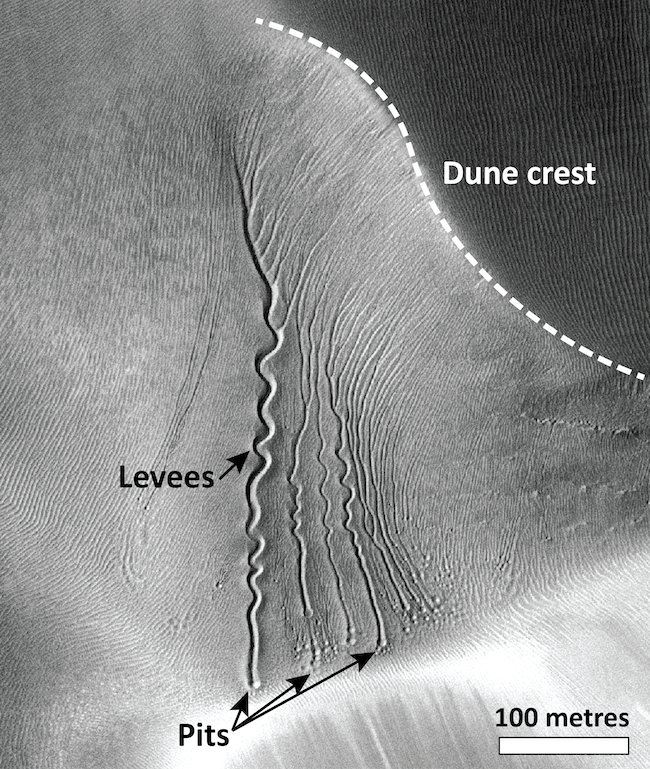
Mysterious gullies on Mars appear to have been dug, but by whom or what? Video via Faculty of Geosciences Utrecht University.
- Gullies are common on Mars. Flowing water likely created many of them a few billion years ago. Most are on crater walls or other slopes.
- Another unique kind of gully is on Martian sand dunes. These are deeply dug into the dunes and have an unusual twisting shape.
- Blocks of carbon dioxide (CO2) ice moving downslope created these gullies, researchers in The Netherlands said.
Gullies are common on Mars, likely created by flowing water a few billion years ago. But on October 13, 2025, a team of researchers, led by Lonneke Roelofs at Utrecht University in The Netherlands, said it has investigated some unusual gullies in Martian sand dunes that look a bit different than usual. They appear to be recent, not ancient, and dug deeply into the sand, looking like something made by a sandworm in the science fiction film Dune. How do they form? The researchers said blocks of carbon dioxide (CO2) ice likely carved out the gullies.
Some researchers had suggested that the CO2 ice, also known as dry ice, might be involved. And now the new research appears to confirm that.
The other gullies – not to be confused with the other dark streaks also seen on slopes – are much like gullies on Earth. Either liquid water or melting ice might have formed them.
The researchers published their peer-reviewed findings in Geophysical Research Letters on October 8, 2025.
How do the sand gullies on Mars form?
How did these unique gullies form? Roelofs had previously studied how CO2 ice can cause debris flows on slopes on the walls of craters. These other gullies were a bit different though. She said:
But the gullies from this research looked different. Therefore, a different process was behind this, but which? That is what I set out to discover.
Roelofs and her colleagues conducted experiments to see if CO2 ice could indeed explain the odd gullies. Scientists already knew that CO2 ice can form on dunes on Mars. This happens in Martian winter when it is coldest, about -184 degrees Fahrenheit (-120 degrees Celsius). But when spring begins – still cold but a bit warmer – blocks of ice begin to break off.
It's a phenomenon never seen before. Under normal conditions it doesn't even occur on Earth: the carving of gullies by CO2 ice blocks. Earth scientist @lonnekeroelofs.bsky.social proved that this may explain the formation of dune gullies on Mars www.uu.nl/en/news/myst… @astrobiologyou.bsky.social
— Faculty of Geosciences, Utrecht University (@uugeo.bsky.social) 2025-10-13T11:22:13.980Z
How C02 ice creates gullies on Mars
On Mars, the air is so thin and cold that the ice doesn’t evaporate. Instead, it sublimates, turning directly into a gas. As the bottoms of the ice blocks sublimate, the ice “explodes” due to the extremely thin atmosphere and difference in temperature between the ice and warmer sand dunes. This causes the ice blocks to move downward on the dune slopes, creating the gullies. The gullies also have unique little ridges of sand on either side of them. As Roelofs explained:
In our simulation, I saw how this high gas pressure blasts away the sand around the block in all directions. However, the sublimation process continues, and so the sand keeps on being blasted in all directions.
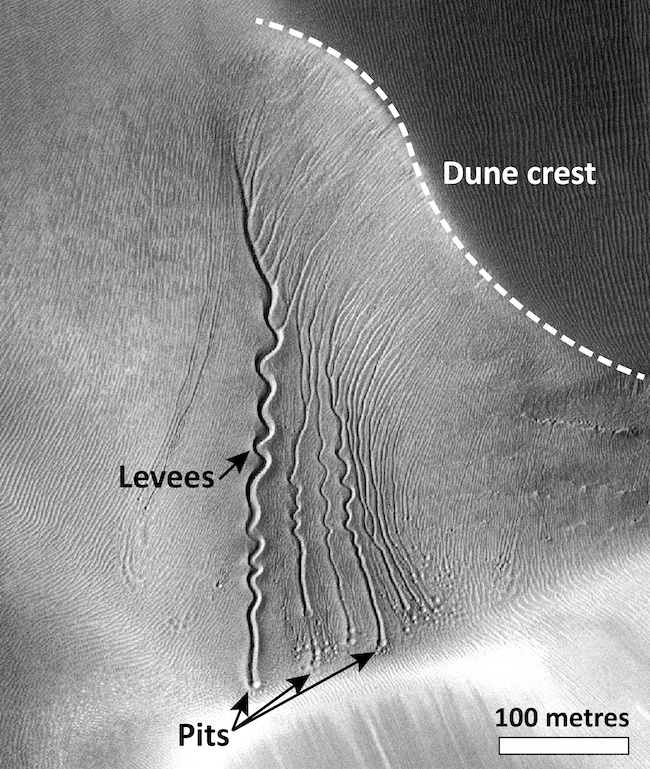
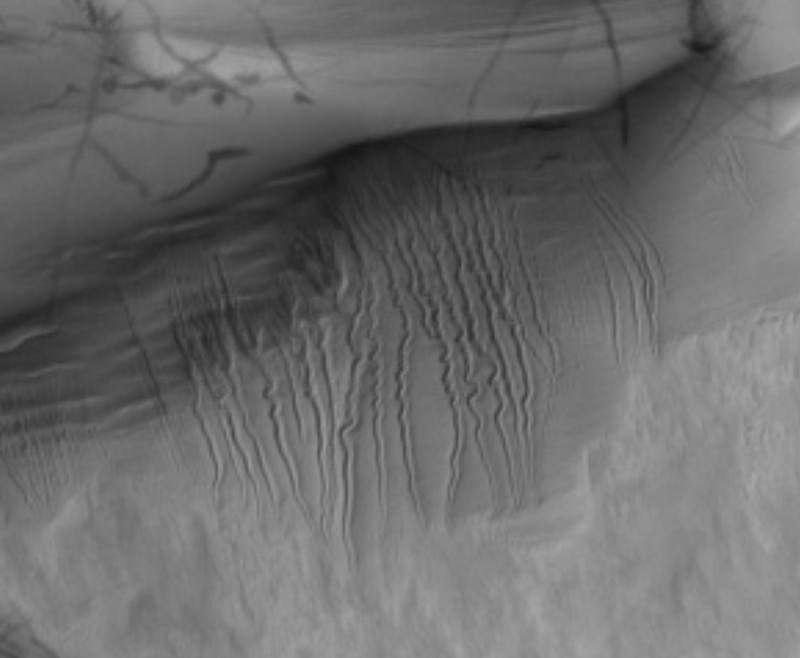
Simulating conditions on Mars
To try to solve the mystery of the gullies, the researchers used a Mars chamber at Open University in the U.K. Scientists use the chamber to simulate conditions on Mars. The researchers took blocks of CO2 ice and let them roll down from the tops of slopes of sand. The slopes were of varying degrees of steepness. And it worked; the blocks created gullies similar to those seen on Mars. Roelofs said:
We tried out various things by simulating a dune slope at different angles of steepness. We let a block of CO2 ice fall from the top of the slope and observed what happened. After finding the right slope, we finally saw results. The CO2 ice block began to dig into the slope and move downwards just like a burrowing mole or the sandworms from Dune. It looked very strange!
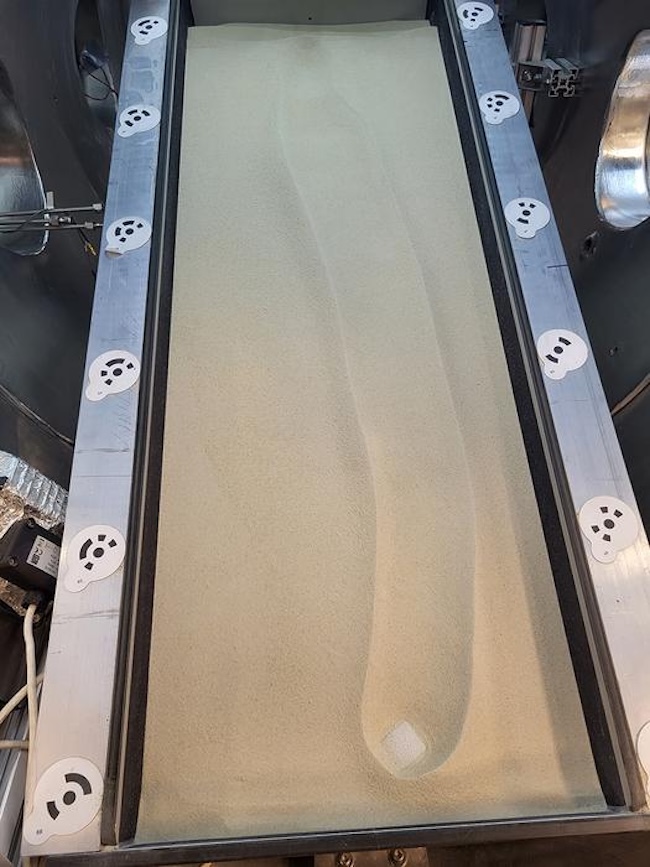

An unearthly phenomenon
The blocks of CO2 ice are a phenomenon not seen naturally here on Earth. So what causes them? On Mars, CO2 ice occurs naturally, as well as water ice. The CO2 ice blocks tend to occur in the southern hemisphere. As Roelofs explained:
The CO2 ice blocks form on the desert dunes halfway down the southern hemisphere of Mars. During the winter, a layer of CO2 ice forms over the entire surface of the dune field, sometimes up to a thickness of 70 centimeters (28 inches)! In spring, this ice begins to warm up and sublimate. The last remnants of this ice are located on the shaded side of the dune tops, and that is where the blocks break off from once the temperature is high enough.
Once the blocks reach the bottom of the slope and stop moving, the ice continues to sublimate until all the CO2 has evaporated. What remains is a hollow in the sand at the bottom of the dune.
Bottom line: Researchers investigated unusual gullies on Mars that are deeply etched into sand dunes. Blocks of sublimating CO2 ice could create the unearthly features.
Read more: Gullies on Mars may be a result of melting ice
Read more: Could microbial life on Mars be hiding under ice?
The post What etched these strange gullies on Mars into the sand? first appeared on EarthSky.
Stay Informed With the Latest & Most Important News
Previous Post
Next Post
-
 012024 in Review: Highlights from NASA in Silicon Valley
012024 in Review: Highlights from NASA in Silicon Valley -
 02Panasonic Leica Summilux DG 15mm f/1.7 ASPH review
02Panasonic Leica Summilux DG 15mm f/1.7 ASPH review -
 03How New NASA, India Earth Satellite NISAR Will See Earth
03How New NASA, India Earth Satellite NISAR Will See Earth -
 04And Thus Begins A New Year For Life On Earth
04And Thus Begins A New Year For Life On Earth -
 05Astronomy Activation Ambassadors: A New Era
05Astronomy Activation Ambassadors: A New Era -
06SpaceX launch surge helps set new global launch record in 2024
-
 07From Polymerization-Enabled Folding and Assembly to Chemical Evolution: Key Processes for Emergence of Functional Polymers in the Origin of Life
07From Polymerization-Enabled Folding and Assembly to Chemical Evolution: Key Processes for Emergence of Functional Polymers in the Origin of Life













